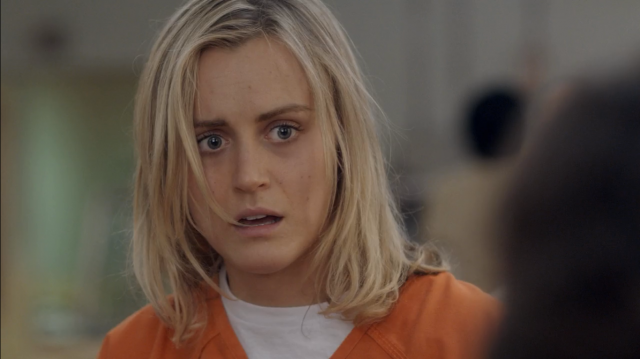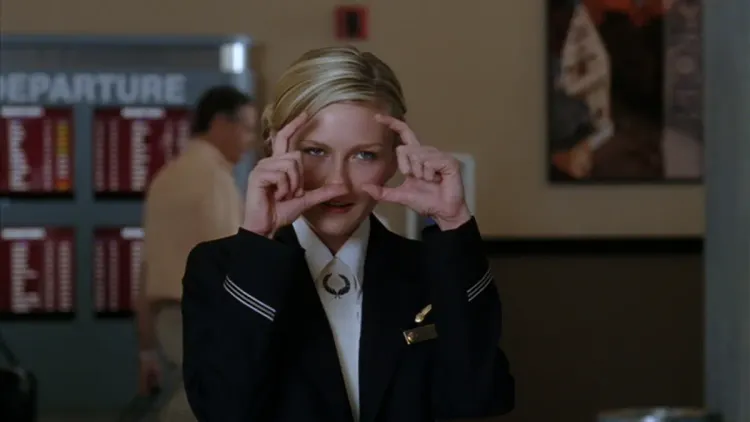Episodes: Why do we hate focal point characters so much?

If there's a common thread to most criticisms of Orange Is the New Black's fourth season -- even the mildest ones -- it's that Piper Chapman doesn't really have a reason to be on the show any more. People who disliked the season (and I should say I thought it was extraordinary) are the most vocal about this, insisting that this is no longer a show about a white woman learning (usually poorly) to check her privilege by going to prison. If nothing else, the events of the season's final handful of episodes should prove that.
Yet I usually stick up for Piper, and have gone so far as to say that Orange probably wouldn't work without her. That's less true in season four than it was in, say, season three, but I still think it's mostly true.
I'm less interested in talking about why I think the show is better off with Piper, though. What I want to talk about is what I realized when I started digging around in my reasoning for why she should stick around. Would you believe it was hardcore TV structure nerdery?
Piper is a character I'd call a "focal point" character. They're common on ensemble dramas, especially ones with really sprawling ones, and they often end up being slightly bland audience surrogate figures. (Orange is unique in that it sets Piper up as an audience insertion figure, but pretty much only for its white viewers. It doesn't pretend the white experience is universal, or at least it tries not to.) Consequently, the audience often ends up hating these characters, for reasons I'm not entirely clear on.
If you're looking at Orange structurally, it sits roughly at the intersection of two TV traditions: the '80s workplace drama (in this regard, it's most like St. Elsewhere) and the broad Dickensian tapestry where characters from all walks of life are forced to work together toward some end (in this regard, it's most like Lost). (There are also elements of the antihero drama and the small-town show in there, but let's not get too far down the rabbit hole.) And both of these shows required focal point characters. Thus, Orange probably does, too. Remove Piper, and the show no longer has a center.
By that, I don't mean that Piper is the center of the show. Indeed, she could probably wander off for a few episodes without the series missing a beat. What I mean is that the series needs her because she's the character the most stories run through, so when it needs to, say, draw a direct line between two characters in completely opposite sections of the prison, Piper is its shortest route. She's basically like a major story thoroughfare: kind of irritating to navigate at rush hour but necessary to connect disparate points.
The thing is that Orange has frequently tried to turn other characters into the focal point. It seemed like it was doing this with Taystee a few seasons ago, and it definitely tried with Daya in season three. (Structurally, the best alternate character to fill that role probably would have been Sophia around season two or so. Her salon could have been a good central set.) But it is, in some ways, a victim of its own success. Its actresses keep booking other work, and only Taylor Schilling is really locked down under the kind of contract that keeps her from going anywhere. The show can't just introduce a new focal point this late in the game either, so it's kind of stuck with her.
What's amusing is how she's suffering the same fate as focal point characters from other shows, especially Jack Shepherd from Lost and Meredith Grey from Grey's Anatomy. Because Piper has to be, on some level, a bit milquetoast and bland, the show has to overcompensate in some other areas to make her stand out. Orange chose to make Piper really irritating, and viewers often seem to miss that this is a conscious choice (particularly to call attention to her white privilege). But very similar things happened with Jack and Meredith, who both spent the early seasons of their shows getting lots of stories where they could cry a lot, while viewers longed to hang out with the more interesting supporting players.
One show that solved this focal point problem in an interesting manner was Deadwood (another show with substantial structural similarities to Orange). There, Seth Bullock was the focal point for most of the first season, and he was often a character fans reacted to poorly in the early going. Thus, in season two, Al Swearengen also became a focal point character, and that allowed the two characters to share the burden. Consequently, complaints about Seth settled down substantially over the course of season two.
(I'm not well-versed enough in the criticism of the '70s and '80s to see if similar complaints greeted, say, Captain Steubing on The Love Boat or Furillo on Hill Street Blues. But I would bet they did at some point or another! For an obvious example of how a show like this functions without a focal point character, look over to Game of Thrones.)
So why do viewers tend to get so bothered by focal point characters? The answer differs from show to show, of course, but I think at the core of that answer is the fact that focal point characters are obvious narrative contrivances, there to knit together a bunch of stories that might normally resist being knitted together. They're central to the narrative, but not in the way we might think of them as being central to the narrative, because they're rarely driving action so much as keeping the plot from becoming unwieldy. They're a subtle reminder that what we're watching is fictional and, thus, stand in the way of suspension of disbelief, just a little bit. And for that, we hate them, no matter how necessary.
--
Episodes is published at least three times per week, and more if I feel like it. It is mostly about television, except when it's not. Suggest topics for future installments via email or on Twitter. Read more of my work at Vox Dot Com.





Member discussion